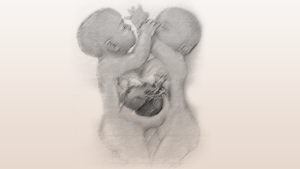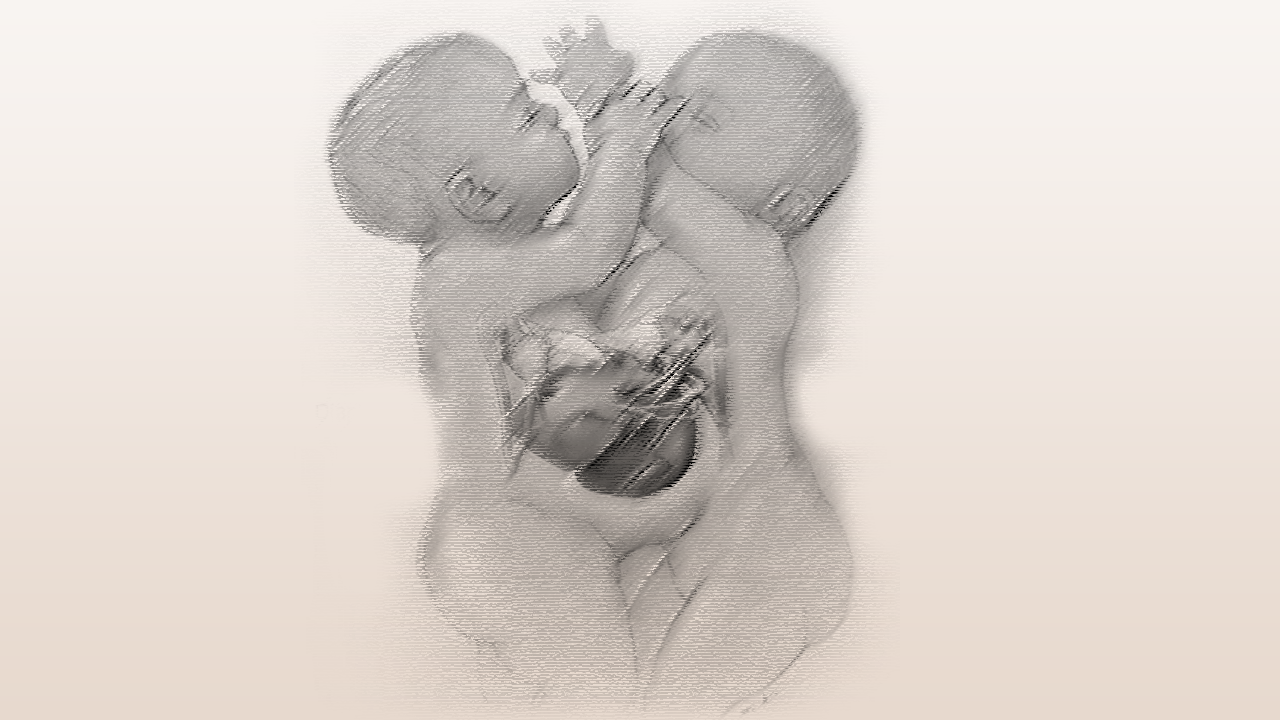Question:
I am writing this letter to ask you a question, hoping that you will help me with this concern. I have been married for a year and four months, and, after a month of marriage, God gave us the most beautiful blessing that He can give to a married couple, that of being parents. Our baby girl was born in December after a somewhat complicated pregnancy, which ended in an emergency c-section. As a result of the surgery, I have to wait at least two years before conceiving again. My husband and I know that using contraceptives is a sin, and we are aware of our responsibility which we assumed on the day we got married, of being collaborators in God’s creative work. That is why we want to know if there is any natural method we could use in the meantime, and, if so, how to use it to be able to wait until I can get pregnant again. I intend to get the proper advice to be able to teach it to my friends. Well, Father, I hope you can help us, and I ask you to pray for us and all the couples in the world.
Answer:
First of all, I would like to congratulate you and your husband for clarifying your moral convictions. The case you are presenting to me is one of those that make recourse to natural methods licit.
St. Pope John Paul II often spoke of the importance of couples being aware of these methods, which serve to both regulate fertility in order not to produce a pregnancy and to seek a pregnancy. There are many natural methods, and they are only diagnostic methods; that is to say, they serve to help spouses know the moments in their relations when they are fertile and when they are not fertile, and in this way, to project their conjugal intimacies.
Since you have asked me to know which are the natural methods, I will include a point written by Dr. Maria Concepcion Morales (which you can find [in Spanish] on the website Vida Humana International) and then a second point where I indicate the data on the “effectiveness” of the methods. First, here are three initial and important observations:
1) We speak of methods in the plural because a married couple may find one method more effective than another (some women with regular cycles prefer to use the rhythm method; for others, it is ineffective, and they prefer the ovulation method).
2) The natural method (especially the ovulation method) should not be learned on your own, but you should find a good natural method instructor; otherwise, you may practice it wrong.
3) Finally, both spouses should learn the method because it is not only the woman’s concern.
1. What are the known natural methods
1) The oldest known natural method is the Ogino-Knauss or Rhythm or Calendar Method, which allows obtaining, through mathematical calculations, a couple’s fertility days. It takes into account that the woman ovulates only once a month, 14 days before the next menstruation, and that the egg lives 48 hours after ovulation and the sperm lives 72 hours after ejaculation.
When the cycles are regular, this method is helpful. Still, given the frequent irregularities, the technique has numerous failures that generally occur because the time between the previous menstruation and ovulation depends on the pituitary gland, also known as hypophysis. This gland, in turn, depends on the hypothalamus, and the hypothalamus on the cerebral cortex. So, any stress is capable of causing ovulation to be delayed or advanced, unlike the second phase of the cycle that is always regular for every woman who is approximately two weeks between ovulation and the next menstruation.
The calculations are made considering the 12 previous cycles, subtracting 19 days from the shortest cycle and 11 days from the longest; the formula would be C – 19 and L – 11. For example, suppose that the 12 previous cycles were 28, 27, 31, 32, 28, 30, 29, 32, 30, 28, 32, and 28 days. The shortest is 27 days, and the longest is 32. We get the formula 27 – 19 = 8 and 32 – 11 = 21; so that by this method, the couple would be fertile from day 8 to 21, and if they wish to postpone pregnancy, they can have intercourse from the first day of menstruation until the 8th day. From the 8th day, they must remain sexually abstinent until the 21st day, after which they can resume intercourse. This method has a safety rate of only 64%.
2) The Basal Temperature Method is based on the increase in temperature that progesterone causes in the woman. This hormone begins to circulate in the second phase of the menstrual cycle, that is, once the follicle has turned into the corpus luteum after ovulation has occurred. When a woman’s temperature rises, it is a sign that she has ovulated. Normally the temperature increases by 2-tenths of a degree Celsius or 4 Fahrenheit. To keep a record, the basal temperature should be taken every day with the same thermometer under the same conditions and at the same time (after at least two hours of rest). To postpone pregnancy by the Basal Temperature Method, sexual abstinence must be maintained from menstruation until three days after the rise in temperature (2°C or 4°F) that is higher than the previous six days, the so-called 3/6 rule. This method is 99% sure but requires a long period of abstinence.
3) The Ovulation Method or Billings Method is a natural and free fertility regulation system based on the determination of the fertile or infertile phases of the woman’s menstrual cycle on the part of the woman herself, recognized by the daily observation of the cervical mucus collected at the entrance of the vagina. This method consists of the woman keeping a daily chart, noting the changes she observes in the cervical mucus. With this method, the woman should pass toilet paper through the vaginal introitus before and after having sex and observe whether or not she finds mucus and its characteristics. It is a very safe method but must be taught by qualified personnel for at least three cycles.
4) The Cervical Self-Palpation Method is based on the fact that the cervix undergoes variations in its characteristics depending on the moment of the menstrual cycle due to hormonal influences. When the woman is fertile, the cervix is high, soft, and with the central orifice ajar. In contrast, in the infertile phase, the cervix is low, hard, and with the external orifice closed, easily recognizable by inserting one’s fingers into the vagina.
5) The Symptothermal Method is not a method itself, but a combination of several methods since it combines Ogino’s pre-ovular calculation, the cervical mucus changes of the Billings Method, the recording of the Basal Temperature, the self-palpation of the cervix, and the intermenstrual pain of ovulation. The combination of all these methods, or only some of them, can be used. When it is desired to postpone pregnancy, abstinence is started on the first of the fertility signs or calculations that appear, and abstinence is ended on the last day of the last method.
6) There are other methods that are also natural since they are based on the determination of fertile or infertile times for a couple to use their parenthood responsibly. However, they are not free, since to get the determination of fertile or infertile times, they use accessories or equipment created by man and which are often expensive, such as:
a) Pocket microscopes: the microscopic structure of saliva and cervical mucus varies depending on whether the woman is fertile or not. By observing the saliva and/or cervical mucus in these kits with very simple training, couples can determine whether the woman is fertile or not. There are different brands, the best known being the Ovulator and the PG-53.
b) Monoclonal methods are very simple to use but expensive. They consist of a urine test looking for the presence of the luteinizing hormone, which, although always present, has a sharp increase 24 to 36 hours before ovulation. The basis is an ELISA test based on monoclonal antibodies, which use a technique of impregnated test strips. When the luteinizing hormone is low, the strip remains white when in contact with the urine, but when the luteinizing hormone is high, which occurs when the woman is fertile, the strip turns blue, which is why it is called the Bluetest [Pregnancy Test Strips]. There are other similar ones but with products in droplets instead of impregnated strips.
c) The Bioself is a small device with an electronic thermometer and a microcomputer that measures, records, and analyzes the basal temperature and, using light signals, indicates the fertility status.
d) The Sofia [Fertility Monitor] is a small computerized device that can provide fertility data by inputting the temperature and cervical mucus data.
The Final Declaration of the Meeting of World Experts on Natural Methods of Family Planning [la Reunión Mundial de Expertos en Métodos Naturales de Planificación Familiar] reaffirms the importance of these methods when it stated the following, “During the last sixty years, the study of symptoms accompanying a woman’s fertility cycle has significantly modified the spacing of births. Going beyond the calendar method of rhythm, modern methods constitute safe and precise ways to achieve pregnancy or to postpone it. Natural methods are based on a solid scientific foundation. The health of mothers and children improves with the natural spacing of births and does not harm either the mother or the child. Natural methods do not harm the health of spouses. The freedom and rights of the woman or husband are respected through these methods, which focus on the woman and the integrity of her body. Natural methods develop a deeper interpersonal relationship between spouses, based on communication, shared decisions and mutual respect, [they] strengthen marriage and thus family life.”
His Holiness, St. Pope John Paul II, in his encyclical letter Evangelium Vitae of March 1995, reaffirms the importance of natural family planning methods and insists on their dissemination.
2. Effectiveness of natural methods
According to studies conducted by the World Health Organization, natural family planning methods have been far superior to artificial methods (contraceptive-abortifacient) in several respects. These studies showed that the methods were easy to learn and apply by women regardless of their cultural level (it was demonstrated that they could be learned and applied successfully even by women with minimal education), that they were accepted in preference to artificial methods and, most importantly, that they proved to be of higher efficiency in preventing pregnancies. To all of these advantages, the fact should be added that by their nature, natural methods of family planning respect the integrity and dignity of the human person without infringing on his or her rights.
A multicenter study involving major cities in different parts of the world and distant from each other (Auckland, Bangalore, Manila, and El Salvador) showed that 93% of fertile women were able to recognize and interpret the time of fertility from their first menstrual cycle (it should be noted that the group from El Salvador included 48% of illiterate women). The study concluded that the probability of conception in the periods determined as infertile was 0.004%, less than half a percent.
In contrast, the rate of pregnancies using artificial birth control methods varied from 1% (combined estrogen-progesterone pills) to 20-23% in users of oral contraceptives.
In a study conducted in Calcutta, India, on the efficacy of the Ovulation Method, a percentage close to 0 (zero) was reported out of a total population of 19,843 poor women of different religious beliefs (57% Hindu, 27% Islamic, 21% Christian).
The conclusions of the World Health Organization study on the efficacy of the Ovulation Method were the following:
1st Using ovarian ultrasound, it was determined that the cervical mucus signs accurately identify the ovulation time.
2nd All women of any cultural and educational level can learn to observe cervical mucus and recognize when ovulation occurs.
3rd Worldwide evidence suggests that birth control methods, abstaining from sexual intercourse in the fertile phase identified by ovulation symptoms, are equivalent to those of artificial contraceptives.
4th The study, conducted on nearly 20,000 poor women in Calcutta with a pregnancy rate close to zero and complemented by other studies in developing countries, demonstrates the effectiveness of family planning with natural methods.
5th Users of the method were satisfied with the frequency of intercourse suggested by this method of family planning, which is inexpensive and may be especially valuable for developing countries
(Cf. R.E.J. Ryder, British Medical Journal, Vol. 307, September 18, 1993, pp. 723-725)
Comparing the two safest natural methods, the effectiveness rates are pretty even (Cf. Dr. Zelmira Bottini de Rey, Dr. Marina Curriá, Instituto de Ética Biomédica, Curso de Planificación Familiar Natural, Universidad Católica Argentina Santa María de Los Buenos Aires, April 1999):
- Ovulation or Billings Method Rate: 96.6%
(Cf. American Journal of Obstetrics and Gynecology, 1991).
- Symptothermal Method Rate: 97.7%
(Cf. American Journal of Obstetrics and Gynecology, 1991).
- Symptothermal Method Rate (in marriages highly motivated to avoid pregnancy): 97.2%
(cf. Guidelines for the provision of NFP services. WHO. Geneva, 1989).
These are very high rates and certainly, not only meet but exceed many of the most effective artificial methods. Unfortunately, campaigns to discredit natural methods are not based on scientific grounds but on ideological prejudices and economic interests.
Fr. Miguel A. Fuentes, IVE
Original Post: Here















